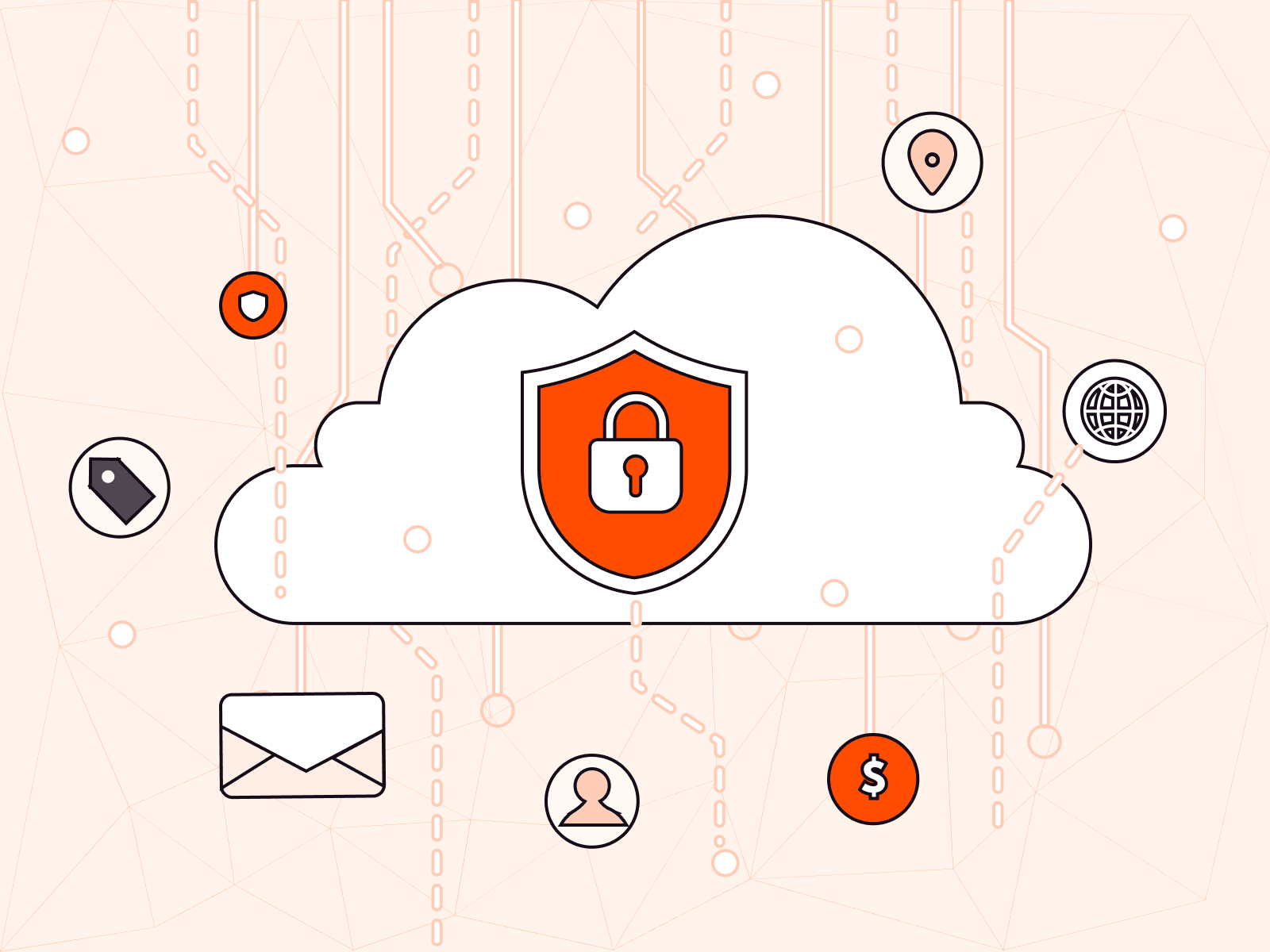Gcore: one-stop shop for any online business
- October 25, 2019
- 6 min read


— Please tell us about Gcore products. What are these solutions and who needs them?
— It makes sense to start with the concept. Today, Gcore is an international leader in the market of cloud and edge solutions that covers all the needs of any online business.
Today, any company that is operating on the Internet needs high-quality hosting, a website that loads in a fraction of a second, the capability to scale their IT infrastructure in a few clicks when traffic increases, tools allowing them to quickly and cost-effectively set up Internet streaming of video content, reliable and safe data storage, and an effective system of countermeasures against unscrupulous competitors and scammers who launch DDoS attacks or steal client data.
We’ve risen to this challenge by offering an international content delivery system that is ready for any traffic load, integrated with cloud object data storage and an advanced media platform for OTT live streaming and video-on-demand delivery; a full-scale cloud infrastructure that is based on IaaS and PaaS models; dedicated and virtual servers located on all continents; as well as highly effective protection against DDoS attacks and fraudulent activities based on unique intellectual traffic filtering technology.
Our clients are mostly medium-sized and large businesses, including media, video game developers and publishers, banks, insurance companies, online stores, hotel and plane ticket booking services, cloud software providers, and many others. We also offer free and cheap service plans with an option of auto registration and card/PayPal payments for small and growing businesses.
All our solutions can be managed through the user’s account with an intuitive interface.
“Therefore, Gcore can offer any online business a cloud service system built as a one-stop solution and meet the entire range of the company’s needs related to working on the Net.”
Sam Davis, VP of Products at Gcore
— What makes Gcore different from its competitors?
— First of all, it’s our points of presence and their quality interconnections. We’re present all around the world, on all continents, including North and South America—something many of our competitors lack.
Secondly, we sell the complete package of services that are essential for online growth; and we provide 24/7 high-quality support for free.
Thirdly, we are the only cloud service provider in the world whose network infrastructure is marked in the Guinness World Records.
On top of that, we offer very affordable prices, with free trial periods available for most of the products.
— Let’s get back to the products. Please tell us more about the CDN and the media platform.
— Our Content Delivery Network (CDN) comprises more than 50 presence points on all continents and allows us to speed up loading of any websites or applications and to minimize lag when watching videos, playing an online game, or listening to audio tracks. The system is ready for any peak loads, which guarantees availability and steady broadcasting of our clients’ websites. For example, our network withstood network loads during the 2018 Winter Olympics in Pyeongchang, the 2018 FIFA World Cup, UFC’s biggest matches (including Conor McGregor vs Khabib Nurmagomedov), and many other events without any issues.
Our CDN is integrated with a cloud media platform. Analytics show that this year, media content will comprise nearly 80 % of global Internet traffic, and this number will increase.
At Gcore, we have developed a unique solution for self-maintained setups of video broadcasting on the Internet. It allows us to deliver video content like streams and video on demand without lag or buffering in Full HD, 4K, 3D, and 360° to any device all over the world. You don’t need to have your own transcoding servers and CDNs for that, nor broadcasting engineers. Gcore cloud media platform is a universal solution and will meet the needs of TV channels, online movie theaters, radio stations, news portals, virtual concert organizers, video bloggers, and companies from any industry working with video content.
Also, the CDN is integrated with a hot storage class cloud object data storage with availability and information integrity indexes at 99.99 %, as well as with the global hosting network consisting of virtual and dedicated servers in more than 20 presence points worldwide, including the USA, France, the Netherlands, Australia, China, and South Africa. The hosting and storages are built upon new high-duty and reliable equipment by leading manufacturers, including Dell, HP, and others, while the integration with the CDN allows for an average response time of 30 ms worldwide—that’s one of the best rates on the market based on the Citrix independent analytics system.
— Can you talk about your cyber security solution?
— Gcore offers a unique protection service against DDoS attacks and fraudulent activities based on unique intellectual traffic filtering technology. This solution is able to reflect DDoS attacks of any complexity and volume and can be set up within minutes. The technology combines the analysis of statistical, signature, technical, and behavioral factors, allowing us to neutralize low-frequency attacks (“low and slow”) at the application level and to cut off even singular bot queries. We don’t block IP addresses; only separate harmful sessions are cut off. This is important, because today a lot of users are using the Network Address Translation technique, for example when connecting to public Wi-Fi on the subway or in a café. So, when just one IP address is blocked, the resource becomes unavailable for dozens, hundreds, or even thousands of legitimate users.
— You released a public cloud recently. What’s it for?
— For us, the release of a public cloud is, to say the least, the project of the year. We’ve already launched the full-scale IaaS infrastructure (Infrastructure as a Service), and soon we’ll add a feature to the system that allows us to move to the PaaS model level (Platform as a Service). Our goal is to become a cloud provider on par with Amazon and Yandex.
“What problems does our cloud solve? It allows users to substantially speed up the processes of development, testing, and launching new products and services for businesses of any size, without significant infrastructure costs.”
Sam Davis, VP of Products at Gcore
Today, the key success factor for online companies is access to high-capacity and high-quality development and planning resources, with an option to upscale them quickly if needed. And this poses the following questions: you can purchase resources, but good solutions require substantial investments and ensuing support—and that’s expensive and often not cost-efficient, because after the tasks are completed, those resources often stand idle.
On the other hand, virtual computers and dedicated servers, which offer a limited set of computing capacities, are not suited for the tasks of fast growth and infrastructure scaling. For example, to add RAM or to enlarge the volume of your dedicated server’s hard drive, a specialist with your service provider needs to arrive physically at the data center and add that hardware to your machine. Sometimes there isn’t time to do this. Besides this, remote servers are usually provided for a fixed monthly or yearly payment.
A cloud is another matter: here in your personal account you can order a specific set of any capacities for your needs (for example, to withstand a peak influx of players after the release of an online game or to test a face recognition / car identification / document scanning application for an insurance company), and you pay only for the resources you actually use by the minute, utilizing a pay-as-you-go model.
Currently, our public cloud offers a standard functionality of crossfunctional virtual machines, not limited in capacity, with an option of automatic scaling, system backup, data disaster recovery, and so on. On the roadmap, there’s the deployment of infrastructure for artificial intelligence, machine learning, database management, and much more.
The cloud features can be used by the media, financial institutions, game developers and publishers, online retail companies, educational and healthcare organizations and services, as well as by various independent developers.
Today, our cloud is based in Luxembourg; Frankfurt, Singapore, Sidney, Santa Clara, and São Paolo are to follow.
— What trends in the development of cloud technologies and the media and entertainment industry can you mention? How will the development of 5G networks affect the entertainment and media markets?
— Surely, the most significant trend in our industry is the transition to the edge cloud, i.e. infrastructure tends to be located as close as possible to the end audience or customer in order to decrease the response time. This is the future. How did companies operate before? They installed 100 servers in one big data center in Frankfurt, and everyone was happy. Today, for your services to be in demand, you need to install 10 servers in 10 data servers across Europe.
Another market trend is related to CDN operators building up the capacity of their networks and creating overcapacity. This is due to, on the one hand, the increase of content volume and quality; on the other hand, CDN providers more often than not offer protection against DDoS attacks as well, and those increase in volume and intensity year by year.
Also, today we’re talking about creating additional value by means of complex offers. It is not advantageous for media businesses to purchase a CDN platform, a media platform, and protection against DDoS attacks separately. The market favors service providers who offer an integrated service package that is already smooth-running, optimized, and more cost-efficient as compared to separate offers.
As for the TV broadcasting industry, today we are witnessing a boom in the development of the OTT-model for delivering video signals to end users. This model is several times more cost-efficient than cable and massively more cost-efficient than satellite broadcasting.
“Today, to launch a TV channel, from a technical point of view, there’s no need to purchase expensive equipment and hire a lot of specialists. You just need to send the signal to a cloud media platform, and it will deliver your signal to any device worldwide with a lag of 20–30 milliseconds.”
Sam Davis, VP of Products at Gcore
In the entertainment industry, we see the development of cloud gaming. In such games, all computing is done not by the user’s smartphone or laptop, but by the data center. Consequently, the game is returned to the user’s device just as a video stream. Therefore, on the one hand, users get access to a truly seamless gaming experience; they can, for example, close the game on their tablet when leaving the subway and then return to the same moment in the game on their PC. Also, even the gamers whose devices offer very modest performance, get access to the cutting-edge games. On the flip side, the load on the data centers and data channels increases in this scheme. That’s why, and also as the 8K video format and the devices that support it emerge, the development of 5G networks will be very useful. Other than that, in my opinion, 4G networks with their speed of 30 Mbit/s are quite sufficient for all current needs of the media and entertainment industries; this speed covers almost all lag and buffering issues.
Related articles
Subscribe to our newsletter
Get the latest industry trends, exclusive insights, and Gcore updates delivered straight to your inbox.






